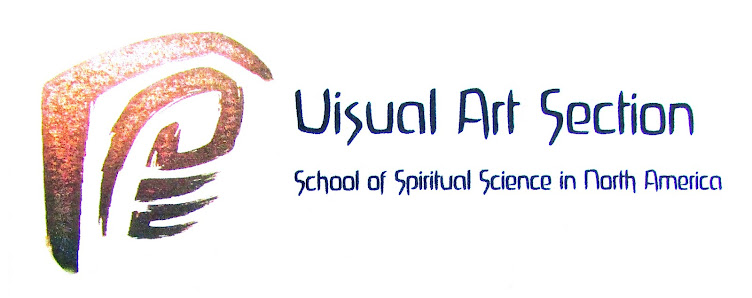Lee Ufan, Marking Infinity at the Guggenheim
 |
| Lee Ufan creating work at the Guggenheim |
 |
| Lee Ufan work in the Guggenheim |
 |
| Lee Ufan creating work at the Guggenheim |
This Fall the Guggenheim in NYC
hosted a retrospective of the contemporary Korean artist Lee Ufan and called it
marking infinity. His work and
questions concerning art are extremely revealing not simply of his person but
of the greater questions of our time.
If I were to try to encapsulate the fundamental mission of Lee Ufan it would
be in two points. One is to fight
against culture and visual art being thought of as objects which exist in self
sufficient contentment. The second
was to facilitate experiences for people, in which they could genuinely say
that they encountered some aspect of
nature, or reality.
An illustration of the first and
second point would be a work consisting of two objects in a room, a natural
stone and a metal plate. The plate
is leaned against a wall and the stone resting on the floor. The experience is of the whole space
and the relations alive in it which de-objectifies the art. The experience is of materials, objects
and spaces which Ufan has minimally engaged. Ufan wants to facilitate meetings between natural objects
and people and sees that the museum is one place where everyday awareness can
be infiltrated. For Ufan,
contemporary inner life is a place of images that have lost “their
exteriority. Generally speaking,
we can see gesture as an artistic act that cuts into and opens up holes in the
systemized fiction of the everyday environment determined by assumed values.”[1] So for Ufan, Duchamp’s placing a
porcelain urinal in a museum was such an incision, suddenly assumed values fall
away and we meet an object we supposedly knew already. The artists job is to facilitate such
meetings.
It is unfortunate that we
experience culture as contained in some few magical objects and not as simply
aspects of the great cultural reality of our daily life. The desire for artistic creations to be
experienced as meaningful, not only as specialized objects for a high brow
society, but for all human beings and modern life in general is easy to understand. We do not have this culture
currently. In fact our inner
experience of life, our “assumed values” are so barren that we want to escape
our culture. But where can we find
solace? Ufan offers encounters
with nature, or things as they are.
With this he testifies that human culture has lost touch with spiritual
inspirations of the same elemental power as natural inspirations. In the past these spiritual
inspirations have never been the same as natural inspirations, though they
share in the same spirit. When the
cultural vigor wanes, it is understandable that we run to nature for
nourishment. Rudolf Steiner
indicated this already on the multiple occasions that he described the advent
of landscape painting as a result of the withdrawal of a higher cultural
inspiration.[2] He also pointed out that no artist
stood a chance in competition with nature. The landscape will always triumph. It is when a painter brings something new to nature, as an
inspired higher nature, that their work is really justified. Ufan has at least given up rendering
nature, and simply brought her into the museum.
